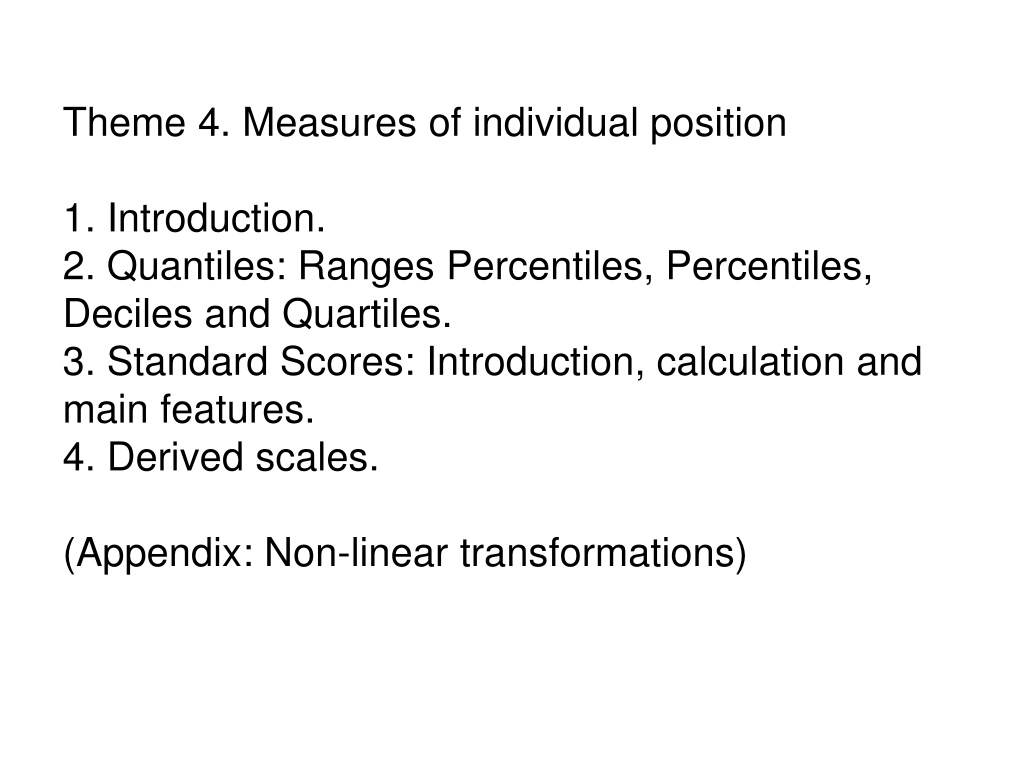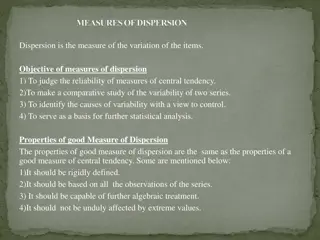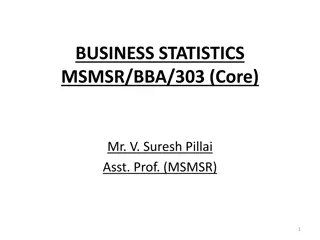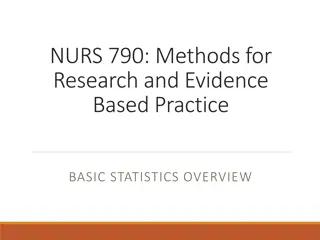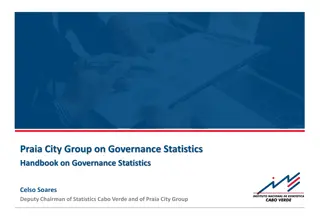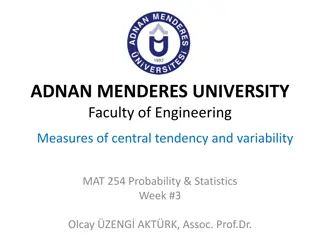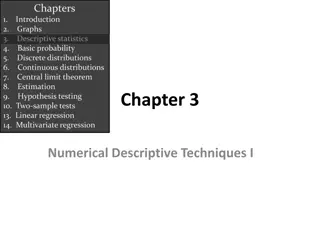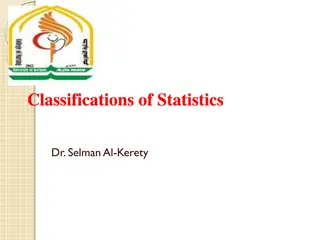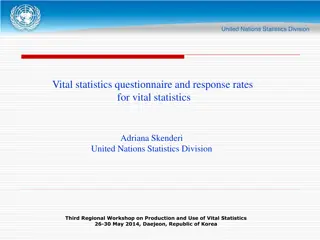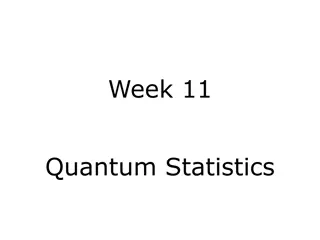Measures of Individual Position in Statistics
Explore the concepts of quantiles, percentiles, standard scores, and derived scales in statistics to understand the position of values within a dataset. Learn about the calculation and interpretation of these measures along with examples in Excel. Discover how linear transformations impact distributions without altering shape.
Download Presentation

Please find below an Image/Link to download the presentation.
The content on the website is provided AS IS for your information and personal use only. It may not be sold, licensed, or shared on other websites without obtaining consent from the author.If you encounter any issues during the download, it is possible that the publisher has removed the file from their server.
You are allowed to download the files provided on this website for personal or commercial use, subject to the condition that they are used lawfully. All files are the property of their respective owners.
The content on the website is provided AS IS for your information and personal use only. It may not be sold, licensed, or shared on other websites without obtaining consent from the author.
E N D
Presentation Transcript
Theme 4. Measures of individual position 1. Introduction. 2. Quantiles: Ranges Percentiles, Percentiles, Deciles and Quartiles. 3. Standard Scores: Introduction, calculation and main features. 4. Derived scales. (Appendix: Non-linear transformations)
Introduction Here we will study statistical indicators that provide insights into various characteristic points of the distribution In particular, these indices provide information about the position of specific values within the data set. --A person with a very high percentile on an IQ test will mean that the person is well above most people in intelligence. --if we know that a person have a typical high positive standard score on an intelligence test, this would provides information about the intelligence of the person (higher intelligence in relation to the group).
Quantile: Ranges Percentiles, Percentiles, Deciles and Quartiles Percentiles divide (sorted) data distributions into 100 parts. Each part contains 1/100 scores. Centil 60, for example, is the score that leaves below 60% of the data. The Centil 15 leaves below 15% of the data. Percentiles divide the dataset into 100 parts. There are other quantiles. One is the median, dividing the distribution into two parts (median = Centil 50) Other quantiles are the decile (Decile 1 = Centil 10) and quartiles (Quartile 1 = Centil 25, Quartile 2 = Median, Quartile 3 = Centil 75)
Percentiles Computation of centiles k ) 1 + Centile k: ( N Posici n de Orden = 100 50 ) 1 + Median (Centil 50): ( N Posici n de Orden = 100
Percentile Rank (PR) It is an inverse measure of the percentile. It can be used, for example, to indicate the position of the score of an aptitude test. Consider that a score has a percentile rank of 78. That means that 78% of the other people have a lower rating. Calculation (non-group): It can easily be computed with Excel (see next slide).
Example in Excel MIcrosoft The data are in proportions, not in percentages Funci n RANGO.PERCENTIL(matriz;x)
Linear transformations: standarized scores With the form y = a + bx This is how we can switch from Celsius to Fahrenheit degrees. IMPORTANT: linear transformations DO NOT change the shape of the distribution. (You can change the mean and SD, but not the shape of the distribution.) The skewness and kurtosis won t be altered.
Standarized (z) scores They indicate ndicate the number of SDs that an observation is separated from the group mean. X X = i z i s x Mean standard scores is 0 The variance (and SD) is 1 Important: z-scores are abstract (this allows the comparison of variables with different units).
Standarized scores (example) Students A and B have passed a test, and we know that the standard score of A 1 and the standard score of B is 0. Which one got a better note? Obviously is A and her/his score is 1 SD above the mean of the group; In the case of B, her/his score is exactly the mean of the group
4.4 transformations (on standardarized scores) A small drawback of the standarized scores is that they invole the use of very small values (decimals, usually) and negative values. Therefore, we can compute linear transformations on standard scores. The example we are going to see are the T scores (mean 50 and SD 10) and IQ scales (mean 100 and dSD15).
T-scores are a t transofrmation of the standard score Z, which has been shifted and scaled to have a mean of 50 and a standard deviation of 10 = + T a z b i i Generically Observe that the new mean is given by b, and the SD is given by the absolute value of a In the case of T, a=10 y b=50 IQ scales For IQ scales: = + 15 100 CI z
